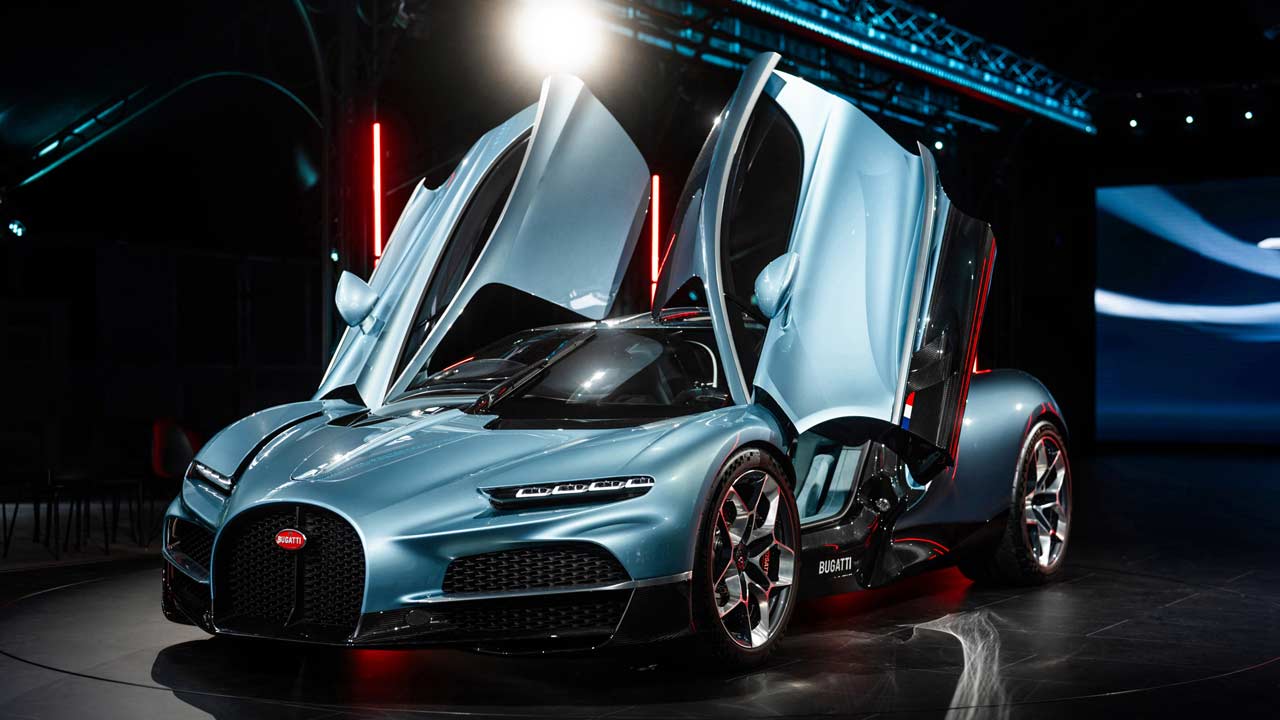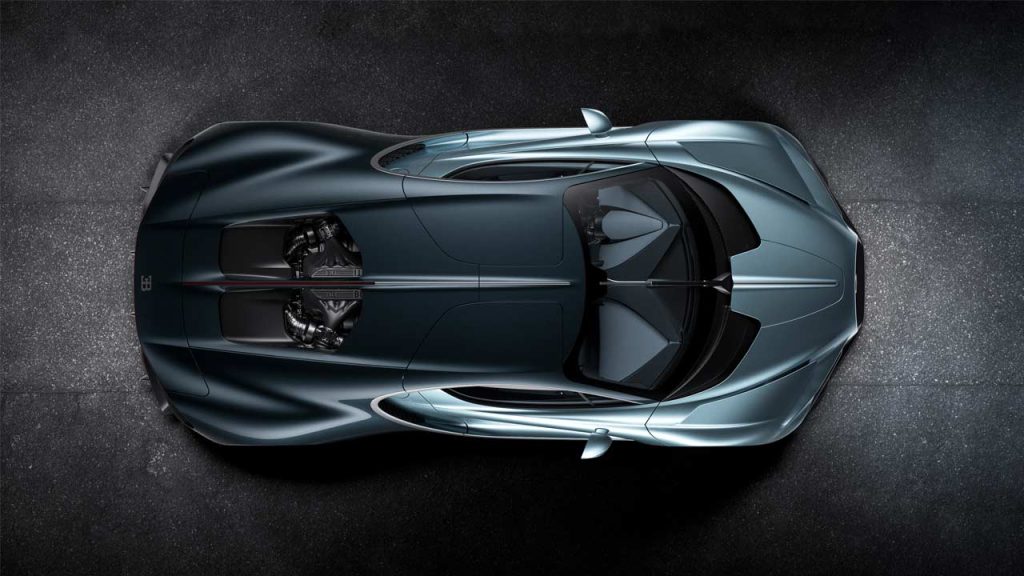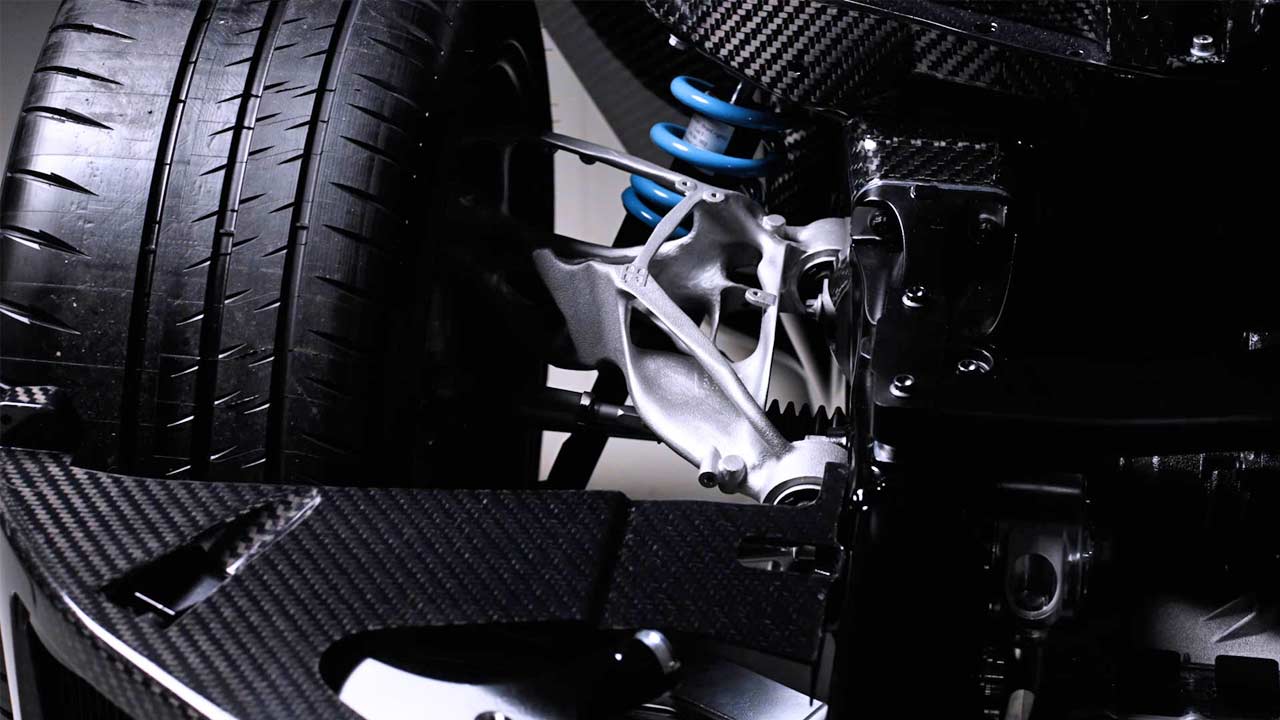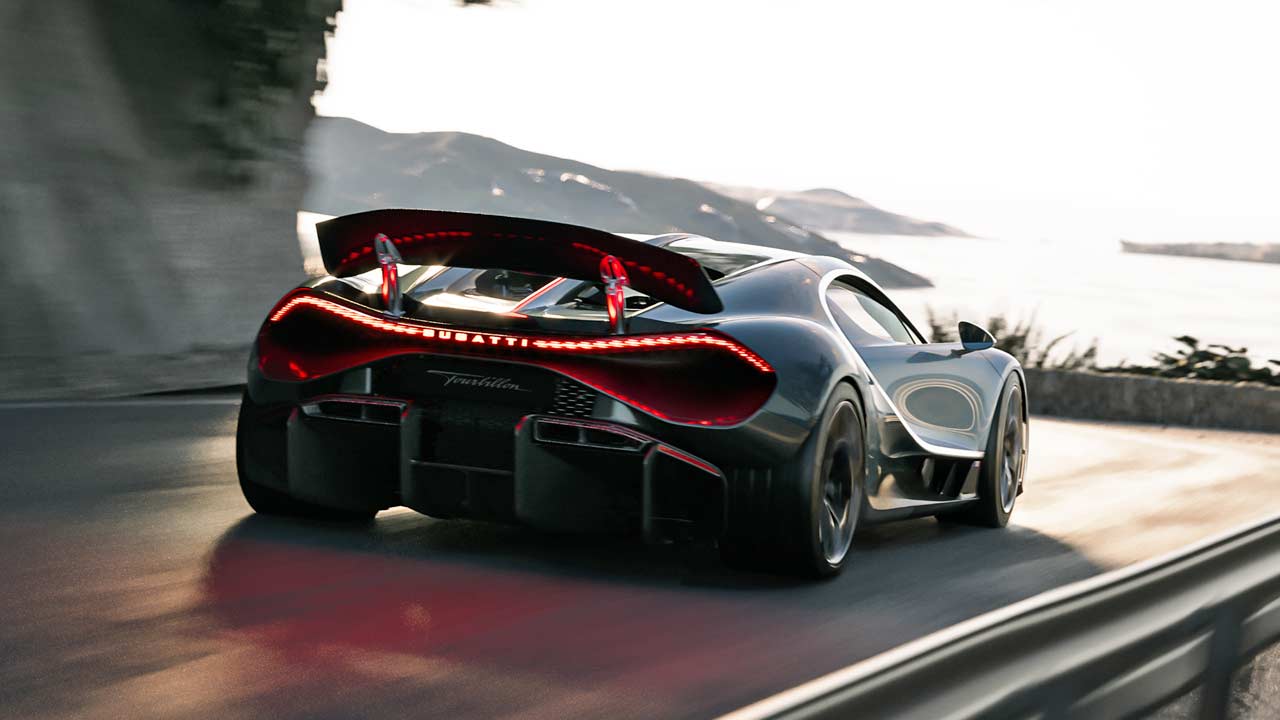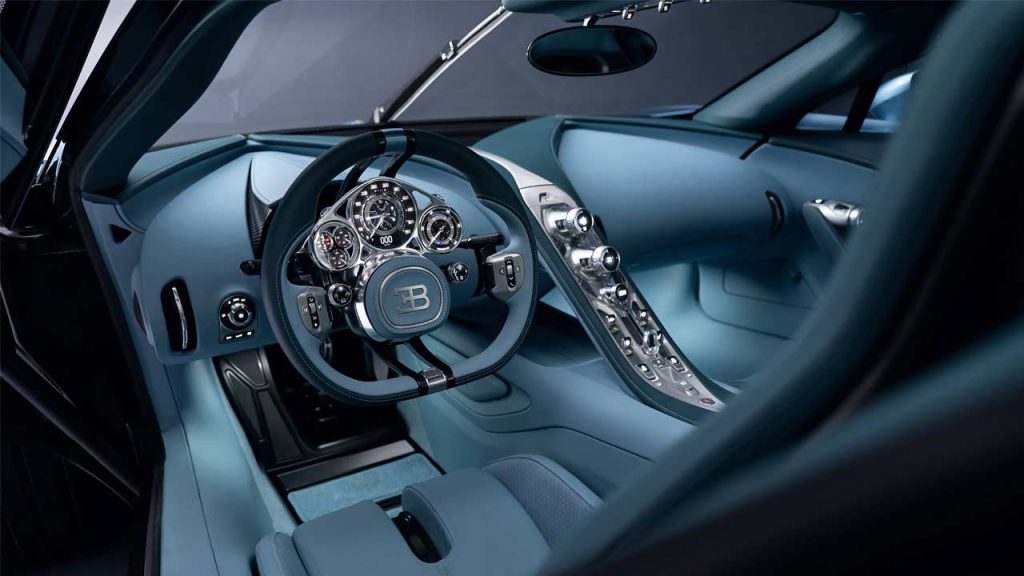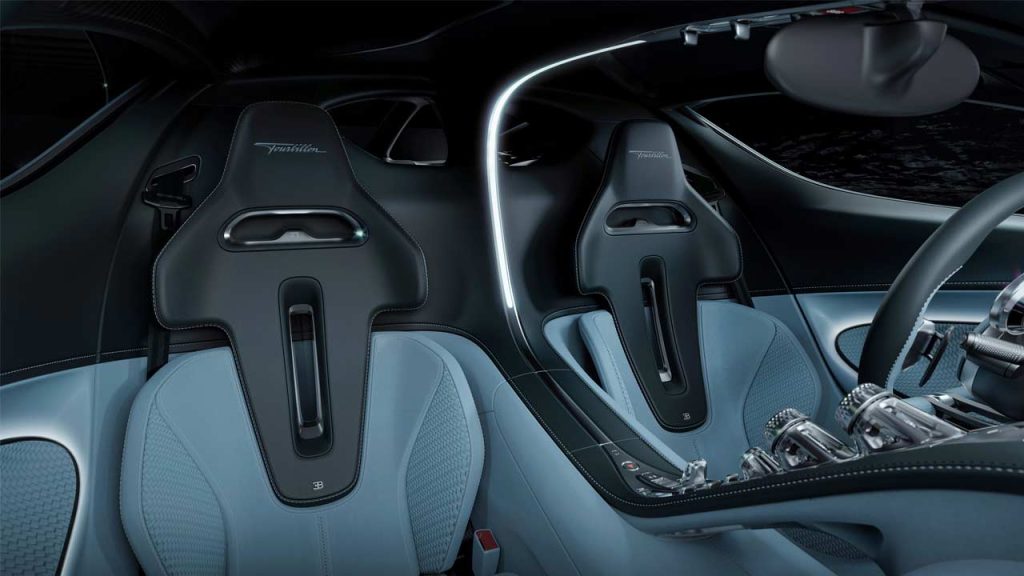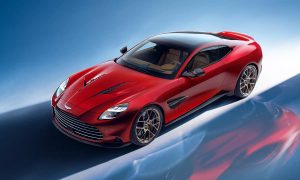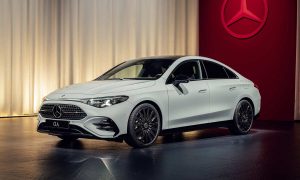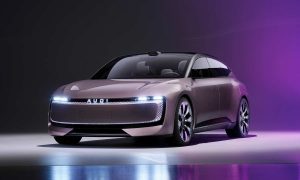Yes, yes, we’ll talk about that V16 in just a li’l bit, but as some of you guessed right, the Tourbillon is the first new offering from the Bugatti-Rimac joint venture. A lot of us thought the next new Bugatti was gonna be all-electric, but the JV surprised us with a N/A V16. I know, there are also three electric motors, but still, it is good that the new Bugatti is not a BEV. Bugatti plans to build only 250 units of Tourbillon, with each carrying a base price of €3.8 million net. But a quick glance at the brand’s recent history indicates that the company doesn’t hesitate to “upgrade” its plans; meaning, Bugatti might produce more than 250 units.
The design of the Tourbillon was led by Frank Heyl, who spent 15 years at Bugatti, before being promoted to the Director of Design in 2023. Which is probably why the Tourbillon’s design doesn’t look very fresh. I mean, it looks more like another special, limited edition of the Chiron. The rear-end just reminds us of the one-off La Voiture Noire. That said, the Tourbillon has dihedral doors/butterfly doors, which I think were influenced by the brand’s JV partner. But let’s not think too much about the design, because remember, the Tourbillon needs to appeal only to 250 (lucky) people.
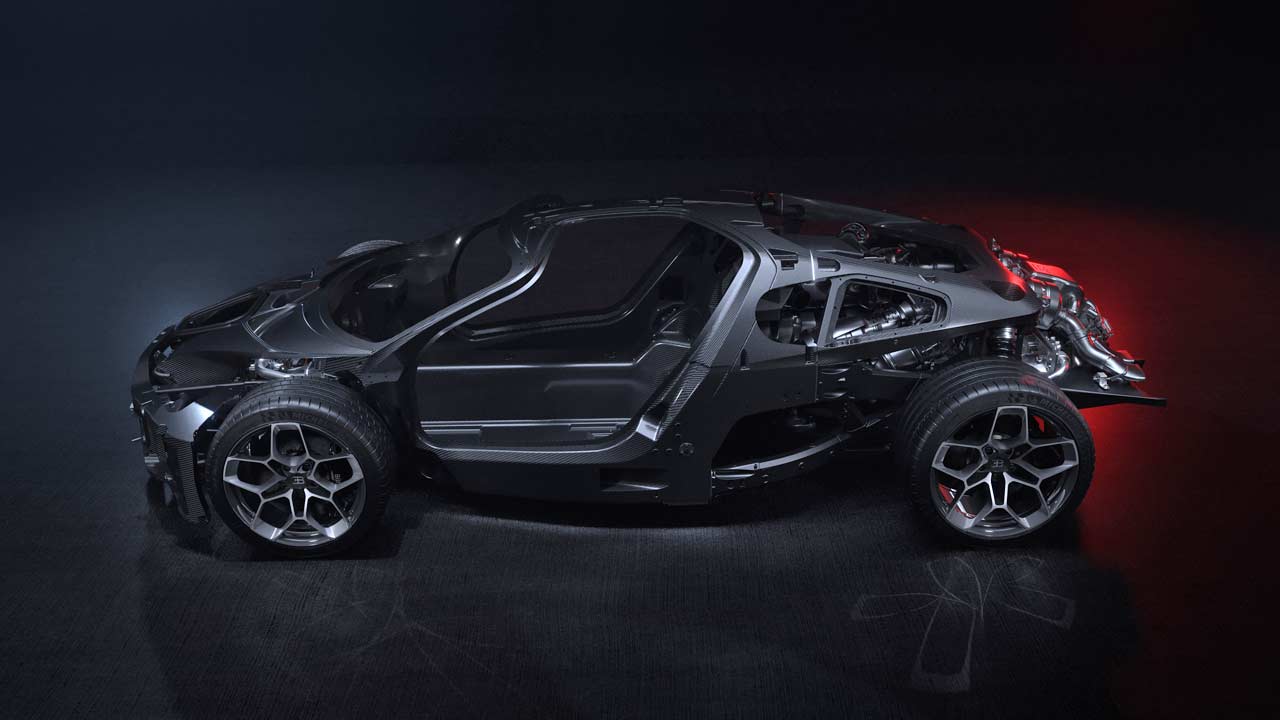 T800 carbon composite monocoque
T800 carbon composite monocoque
The Tourbillon might look like just another special edition Chiron, but CEO Mate Rimac assures that the connections to the past models are limited to design inspirations. This new hypercar features an all-new chassis, and of course, a new powertrain—which we’ll talk about in just a minute or two. The new chassis integrates forged-aluminium multi-link suspension front and rear, moving on from the double wishbone steel setup found in the Chiron. Thanks to 3D printing and organic design of the suspension components (designed in collab with Czinger), Bugatti claims weight savings of up to 45% compared with the Chiron.
The car rides on a staggered wheel setup of 20-inch at the front and 21-inch at the rear; the rims are shod with bespoke Michelin Pilot Cup Sport 2 tires. Brakes are carbon ceramics, of course.
Alright, let’s get the numbers out of the way then, shall we? The Bugatti Tourbillon is a hybrid hypercar. What that means is, there’s a mix of a few things. Firstly, there’s a new, Cosworth-built 8.3-litre naturally aspirated V16 engine behind the occupants. Thanks to its lightweight construction, it weighs only 252 kg (556 lbs). We read about this engine a few months ago, if you remember. Plus, there’s an electric motor at the rear axle. No, no, wait, we’re not done yet. The front axle is an e-axle; meaning, there are two e-motors on the front axle, which brings the grand total of e-motors to three. The ICE produces 735.5 kW (1,000 metric hp) and 900 Nm (664 lb-ft), while the e-motors further contribute 588.5 kW (800 metric hp) and an undisclosed amount of torque. However, the combined power output is 1,324 kW (1,800 metric hp). Transmission is an 8-speed DCT, claimed to be developed from the ground up specifically for the Tourbillon. If I’m not wrong, the reversing duties will be taken care of by the front e-axle.
The electric motors are powered by a rather large 25 kWh oil-cooled 800-volt battery pack housed in the central tunnel and behind the passengers (T-shaped battery?). Bugatti estimates an all-electric range of over 60 km (37 mi). As for the official performance figures, the Tourbillon is claimed to do a 0-100 km/h (62 mph) sprint in 2.0 seconds, a 0-200 km/h (124 mph) in less than 5.0 seconds, and a top speed of 445 km/h (276 mph). I’m pretty sure, the top speed can be more than that, but the tires are probably the limiting factor.
Inside, there’s a bit of Pagani vibes, thanks to the intricate detailing of the instrument cluster—inspired by luxury mechanical watches. Bugatti claims to have worked with Swiss watchmaking experts for this exquisite cluster—which is made up of more than 600 parts with materials including titanium and gemstones such as sapphire and ruby. The central console design is just as intricate and houses a hidden touchscreen that can pop-out when needed. The seats are fixed to the floor, but the pedal box is adjustable for reach. Another key highlight of the Tourbillon’s interior is a bespoke audio system without traditional speakers and woofers. Instead, there are exciters on the door panels and throughout the car, which enable some interior panels to function as speakers. Not sure how good this setup is, but apparently, it offers weight benefits. But hey, I’m pretty sure those 250 people wouldn’t care much about the audio system when there’s a N/A V16 behind them.

Leave a Reply
Note: Comments that are unrelated to the post above get automatically filtered into the trash bin.
